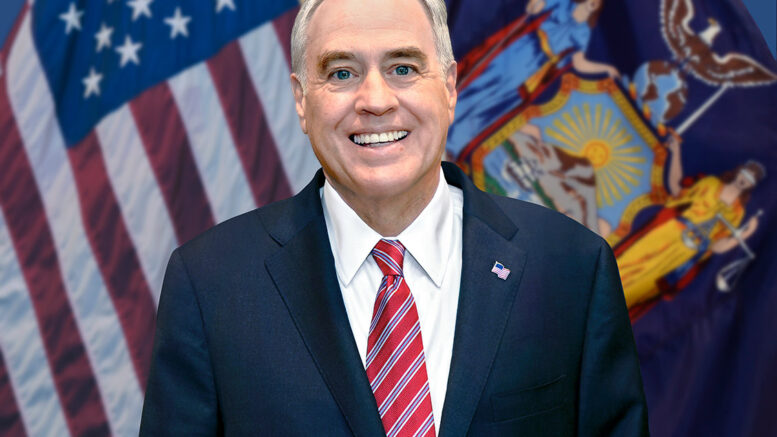New York Comptroller Thomas DiNapoli became the latest official to criticize the state’s rollout of funds from a federal rent relief program as he released a report showing a fraction of the aid has been administered and that the state stands to lose a portion of the nearly $2.4 billion in federal relief funds available if the money continues to only trickle out.
The report finds several issues within the state Office of Temporary and Disability Assistance (OTDA) regarding its handling of the Emergency Rental Assistance Program (ERAP), and those issues are occurring at various points in the process to get funds into the accounts of eligible renters so they can potentially avoid eviction proceedings.
In addition to making substantial improvements to the program’s outreach campaign, DiNapoli, in a statement, also called for state lawmakers to extend New York’s own eviction moratorium, set to expire at the end of this month.
The issues involving ERAP and OTDA are particularly troublesome because, as DiNapoli notes, no state has more renters than New York. Across the state, renters make up 46% of all households, and nearly two-thirds, 63%, of all the state’s renters live in New York City.
Compounding that is the fact, DiNapoli noted that New York City’s unemployment remains nearly double the national average, 10.1% to 5.4% in June.
On June 1, New York started accepting applications for ERAP funding. Residents could apply for funding if they received unemployment or suffered lost income or endured an increase in expenses due to the COVID-19 pandemic; owe back rent since March 13, 2020 – the date when then-President Donald Trump issued the national emergency due to the coronavirus; and are considered a low-income household, defined as making less than 80% of the median income for their location.
Approved applicants can receive up to $15,000. That can be used to pay for up to a year’s worth of back rent or unpaid utility bills incurred since the emergency began.
With monies allocated from the American Rescue Plan and the omnibus spending bill Congress passed at the end of 2020, the state has $2.35 billion in funding available. Yet, despite the application process starting 10 weeks ago, the state had only awarded $108.8 million – less than 5% of the allocation – as of last Thursday.
In addition, OTDA had received just 168,321 applications through the end of July. That’s just 14% of the pool of 1.2 million eligible residents. Through Aug. 9, funds from the program have only gone to 7,072 residents.
The lack of progress has alarmed state lawmakers, who grilled OTDA Commissioner Michael Hein last week, and as well as members of New York’s congressional delegation who worked to include the funding in COVID-19 relief bills. Officials fear the state could lose a portion of the funding if it’s not allocated by Sept. 30, as federal law would then allow the U.S. government to reapportion funds to other states.
“New York’s Congressional delegation has pushed for more efficient distribution of funds, while lawmakers have rightly proposed extending the state’s eviction moratorium,” DiNapoli said in a statement. “We must make sure that we don’t lose these critical funds and that the renters most in need of help don’t get left behind.”
The report found that the initial application process required some technical acumen and access to complete forms online, and paper forms were not easily available. While the forms were recently streamlined, current outreach and promotional material regarding the program still referenced the old application.
DiNapoli also called on the state agency to disseminate educational materials in multiple languages and target key communities for outreach. Besides English, the seven languages there were available on the OTDA website earlier this month did not truly reflect the needs of the community. He also recommended officials work with local nonprofits and community groups and ask them to help residents in need of assistance with the forms.
The problems with rent assistance allocations didn’t begin with ERAP. Officials in the comptroller’s office also reviewed a previously conducted state-authorized COVID-19 rent assistance program. They found that the $100 million program gave a disproportionately lower share to the applicants most in need.
Only 25% of the successful applicants had income levels below 30% of the area median. People making that level of income represent 42% of all low-income households in the state.
This article was originally posted on New York comptroller blasts state for slow rollout of rent relief program

Be the first to comment on "New York comptroller blasts state for slow rollout of rent relief program"